2023-2024 field season begins for British Antarctic Survey
19 October, 2023
The Antarctic field season has started, with over 600 people beginning the journey South to work on over 60 projects on station and in the field. The season of work …
Whales are the largest krill predators in the UK Overseas territory of South Georgia, yet their impacts on krill stocks are poorly understood. Recently, whale surveys revealed high summer abundance and extended use of South Georgia waters into winter, coincident with the winter krill fishery. This DARWIN PLUS project measures how humpback whale foraging intensity varies across the feeding season in South Georgia, using UAV-based (drone) measurements of body condition and satellite-tracking of whale diving rates to measure season-specific krill consumption, and inform krill quota-setting for the Subarea 48.3 CCAMLR krill risk assessment.
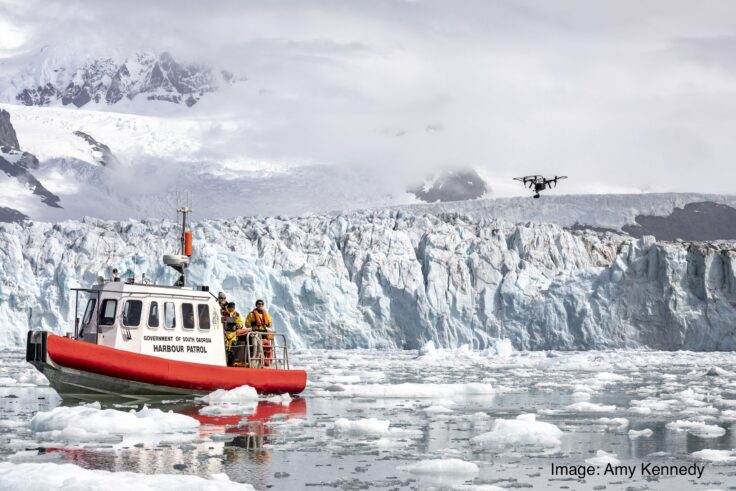
The UAV pilots will collect calibrated UAV aerial images from humpback whales near Cumberland Bay, South Georgia. Small-boat surveys will also be conducted near Cumberland Bay, collecting whale sightings, photo-identifications and biopsy samples. Humpback whales will be instrumented with depth-recording satellite tags, to identify spatial habitat-use and how foraging depth and intensity varies across the feeding season.
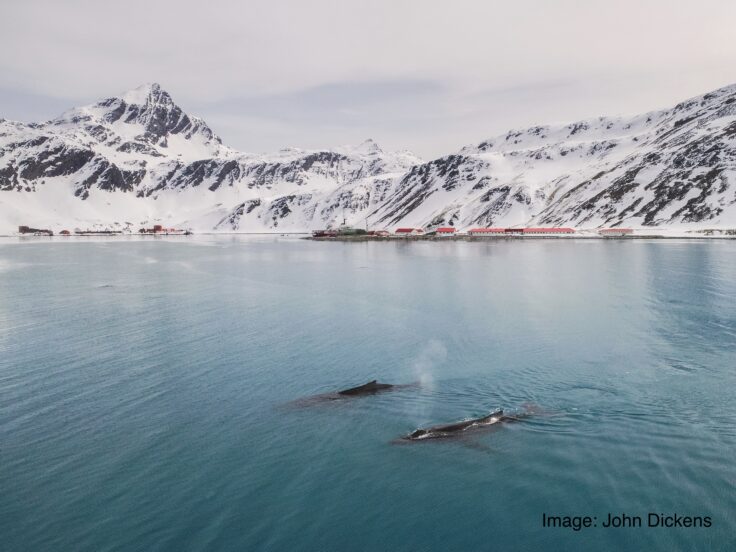
This project will provide seasonal krill consumption estimates for humpbacks and generate satellite tracking-based winter habitat use models to describe whale distribution. Both datasets will be integrated into the CCAMLR Area 48.3 krill risk assessment and will provide baseline measurements of krill consumption in South Georgia waters by whales across seasons.
Funding: Darwin Plus, South Georgia Heritage Trust and Friends of South Georgia Island. Logistical support from the Government of South Georgia and the South Sandwich Islands.
Follow the progress of the project on X and Instagram.
HIGHLIGHTS SO FAR
The first Stakeholders meeting for the Hungry Humpbacks project was held on the 5th September 2023. You can find excerpts of this meeting here.
The first field leg of the project took place in Abrolhos Marine National Park, Brazil from 20 September to 17 October 2023, recording the body condition of humpback whales at the end of their breeding season before they migrate south towards their feeding grounds in South Georgia and the Scotia Arc.
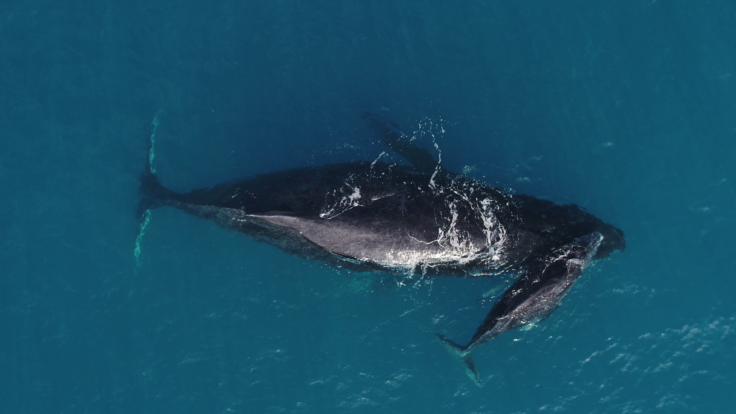
During this field project, a total of 121 drone flights were carried out, and more than 200 aerial photographs were taken of individual humpback whales. In addition, 34 skin and blubber biopsy samples were collected to determine the sex and pregnancy status of some of the measured whales. The whales encountered included mothers with calves, sometimes accompanied by an escorting male, singing males, and competitive groups. The whales are now migrating towards their feeding grounds around South Georgia, where they will build up fat reserves for the next winter breeding season.
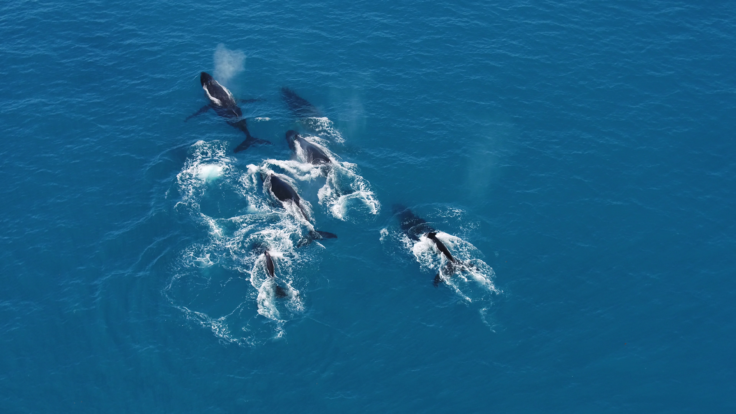
The next stage of the project was fieldwork using drones to study whales from land at Cumberland Bay, South Georgia during December 2023-January 2024. This had not been tried before and the two man team worked hard to find good vantage points to overfly whales and overcome challenging weather conditions and difficult terrain (including many seals hiding in tussock!). You can read their report here.
Next, two months of boat-based surveys were conducted in South Georgia in February and March 2024, working on powerboats and staying close to Cumberland Bay and coastal waters. The six-person boat-based team arrived at KEP in mid-January with five scientists and one dedicated jet boat driver who had overwintered in previous seasons. Most whales were sighted in January and February before the breakup of iceberg D-30A to the north, which brought large tabular icebergs close to shore in the team’s survey area.
The team had a very busy season! Over 2,200 km of visual transect data were conducted, and 34 cetacean sightings were recorded during the field season. Drone images and identification photos were collected from humpback whales, southern right whales, Antarctic blue whales, fin whales, and Antarctic killer whales. Biopsy samples for genetic, hormone, and isotype analysis were collected from humpback whales, southern right whales, and an Antarctic blue whale. A particular highlight was February 12th, when the team observed a southern right whale mum and calf pair plus an Antarctic blue whale mum and calf pair within two miles of each other!
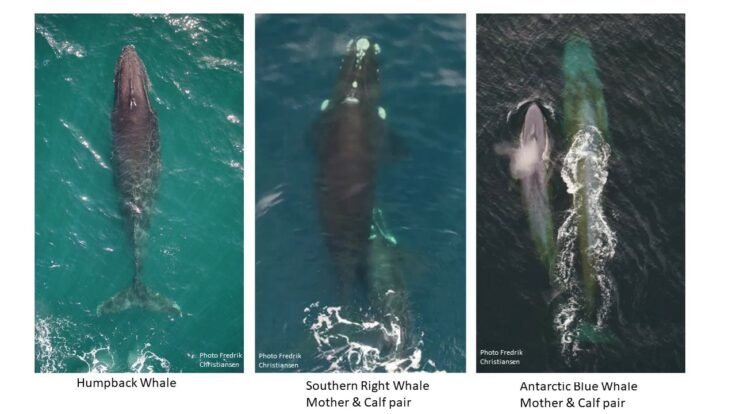
The main focus species for the season was humpback whales, but the swell conditions were too rough to attempt any satellite tagging when humpback whales were in the area. The team successfully tagged a southern right whale on 9th March (named “Disco” after Discovery House, where the team stayed at South Georgia). The tag continues to transmit, and Disco’s movements can be followed here.
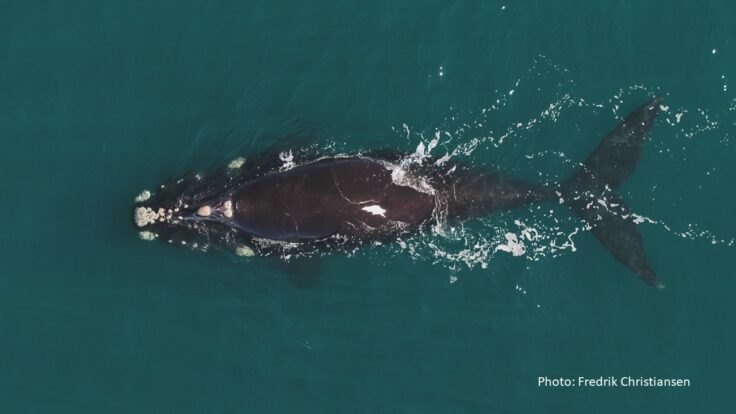
19 October, 2023
The Antarctic field season has started, with over 600 people beginning the journey South to work on over 60 projects on station and in the field. The season of work …